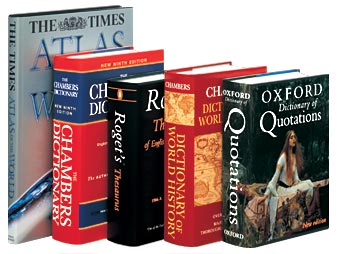 works which list primary and secondary resources in a specific subject area
works which list primary and secondary resources in a specific subject area
works which index, organize and compile citations to, and show you how to use, secondary (and sometimes primary) sources.
materials in which the information from secondary sources has been "digested" - reformatted and condensed, to put it into a convenient, easy-to-read form.
sources which are once removed in time from secondary sources
 These consist of information, which is a distillation and collection of primary and secondary sources. Twice removed from the original, they include encyclopedias, fact books and almanacs, guides and handbooks. Some secondary sources such as indexing and abstracting tools can also be considered tertiary sources.
These consist of information, which is a distillation and collection of primary and secondary sources. Twice removed from the original, they include encyclopedias, fact books and almanacs, guides and handbooks. Some secondary sources such as indexing and abstracting tools can also be considered tertiary sources.
This is the most problematic category of all. Fortunately, you will rarely be expected to differentiate between secondary and tertiary sources.
 almanacs and fact books
almanacs and fact books
bibliographies (may also be secondary)
chronologies
dictionaries and encyclopedias (may also be secondary)
directories
guidebooks, manuals etc
handbooks and data compilations (may also be secondary)
indexing and abstracting tools used to locate primary & secondary sources (may also be secondary)
textbooks (may also be secondary)
We acknowledge the Australian Aboriginal and Torres Strait Islander peoples as the first inhabitants of the nation and acknowledge Traditional Owners of the lands where our staff and students, live, learn and work.

This work is licensed under a Creative Commons Attribution-ShareAlike (CC BY-SA) 4.0 International License, unless otherwise noted. Content from this Guide should be attributed to James Cook University Library. This does not apply to images, third party material (seek permission from the original owner) or any logos or insignia belonging to JCU or other bodies, which remain All Rights Reserved.